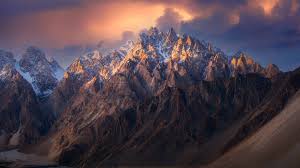The Majesty of Mountains
Mountains stand as timeless sentinels, towering over the landscape with their majestic peaks and rugged beauty. These natural wonders have long captured the imagination of mankind, inspiring awe and reverence with their grandeur.
From the snow-capped summits of the Himalayas to the rolling hills of the Scottish Highlands, mountains come in a variety of shapes and sizes, each offering its own unique charm and challenges. They serve as both a playground for adventurers seeking thrills and a sanctuary for those yearning for solitude and reflection.
Mountains are not just geographical features; they are also rich in biodiversity, hosting a diverse array of flora and fauna that have adapted to thrive in these harsh environments. From elusive mountain goats clinging to sheer cliffs to resilient alpine flowers blooming amidst rocky terrain, life in the mountains is a testament to nature’s resilience and creativity.
But beyond their physical beauty, mountains hold a deeper significance for many cultures around the world. They are often revered as sacred sites, believed to be inhabited by gods or spirits that watch over the land. In many traditions, mountains symbolise strength, endurance, and spiritual enlightenment.
As climate change continues to impact our planet, mountains face increasing threats from rising temperatures, deforestation, and pollution. The fragile ecosystems that exist in these high-altitude regions are at risk, highlighting the urgent need for conservation efforts to protect these vital habitats.
Whether you seek adventure on challenging slopes or solace in serene landscapes, mountains offer something for everyone. Their enduring presence reminds us of our place in the natural world and invites us to appreciate the beauty and wonder that surrounds us.
Exploring the Majestic Heights: A Child-Friendly Guide to Understanding Mountains
- What is a mountain for kids?
- What is it called mountain?
- What is the definition of a mountain?
- What is a short note on mountain?
What is a mountain for kids?
For kids, a mountain is like a giant natural playground that reaches up high into the sky. It is a huge mound of rock and earth that stands tall above the land, often covered with snow at the top. Mountains are exciting to explore, offering breathtaking views, challenging hikes, and opportunities to discover unique plants and animals that call these elevated regions their home. Kids can imagine mountains as magical places where adventure awaits, and where they can feel on top of the world while gazing down at the beauty below.
What is it called mountain?
Mountains are geological formations characterized by their significant height and steep slopes, rising prominently above their surroundings. The term “mountain” is derived from the Latin word “mons” or “mont-” meaning “mountain.” Mountains play a crucial role in shaping landscapes, influencing weather patterns, and providing habitats for diverse flora and fauna. Their imposing presence has long fascinated and inspired humans, leading to the exploration of their peaks and the development of mountain-related activities such as hiking, climbing, and skiing. The designation of a landmass as a mountain is based on specific criteria related to elevation, prominence, and topographical features, highlighting the unique characteristics that define these awe-inspiring natural wonders.
What is the definition of a mountain?
A mountain is defined as a landform that rises prominently above its surroundings, typically with steep slopes and a peak or summit. While there is no universally agreed-upon height threshold that distinguishes a mountain from a hill, mountains are generally considered to be taller and more rugged than hills. They are formed through geological processes such as tectonic uplift, volcanic activity, or erosion, and they play a crucial role in shaping landscapes and influencing weather patterns. Mountains are not only physical features but also hold cultural, ecological, and spiritual significance for many societies around the world.
What is a short note on mountain?
Mountains are towering landforms characterized by their steep slopes, high peaks, and significant elevation above the surrounding terrain. They play a crucial role in shaping landscapes, influencing weather patterns, and providing habitats for diverse flora and fauna. Mountains are often formed through geological processes such as tectonic plate movements, volcanic activity, and erosion over millions of years. They offer breathtaking views, recreational opportunities for outdoor enthusiasts, and serve as important sources of freshwater for rivers and valleys. With their awe-inspiring beauty and rugged landscapes, mountains continue to captivate our imagination and inspire a sense of wonder at the natural world’s grandeur.

